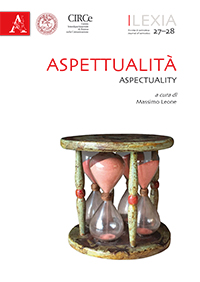Estratto da
LEXIA. RIVISTA DI SEMIOTICA
Aspettualità / Aspectuality
From the historical Jesus to Jesus deified. Discourse strategies of temporalization and aspectualization in the Letters of Paul, the Gospels and Acts
LEXIA. RIVISTA DI SEMIOTICA
Aspettualità / Aspectuality
From the historical Jesus to Jesus deified. Discourse strategies of temporalization and aspectualization in the Letters of Paul, the Gospels and Acts

Analysis of the Letters of Paul, the Gospels and the Acts of the Apostles—all sources that present a Jesus who is already deified but also contain traces of the historical Jesus — reveals apparently contradictory aspectualizations. Some sayings place the coming of the Kingdom ofGod in an immediate future, others in an indefinite future, while yetothers mysteriously locate it in the present. Similarly, there are variousindications of when Jesus became the Son of God: according to sometexts, he is chosen by the Father at the moment of Resurrection; according to other texts, when he is baptized; according to other textsyet, his Father sends him to Earth through having him born from avirgin mother; while later sources regard him as the Son of God fromthe beginning of time (the “eternal Son”). The overall impression isthat of an aspectualization that disproportionately extends the inchoativephase ( Jesus is God from the beginning of time) and the terminativephase ( Jesus will return at the end of time and will reign in God’s eternalkingdom). Other inchoative and terminative hypotheses remain as traceswithin the temporal perspective of eternity, which ultimately identifiesJesus as divine.
| pagine: | 253-266 |
| DOI: | 10.4399/978882550876511 |
| data pubblicazione: | Giugno 2017 |
| editore: | Aracne |








